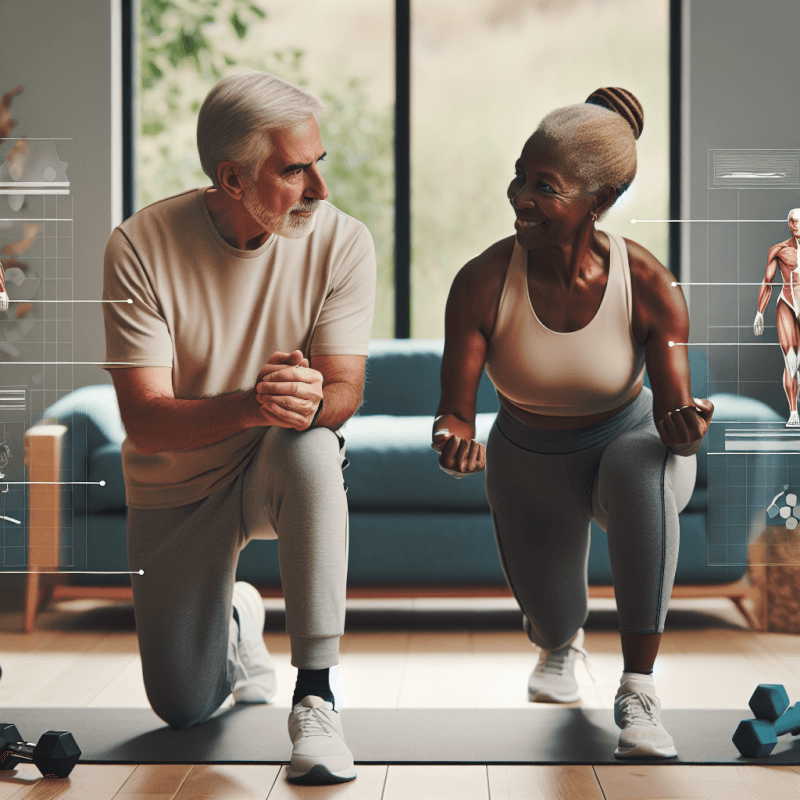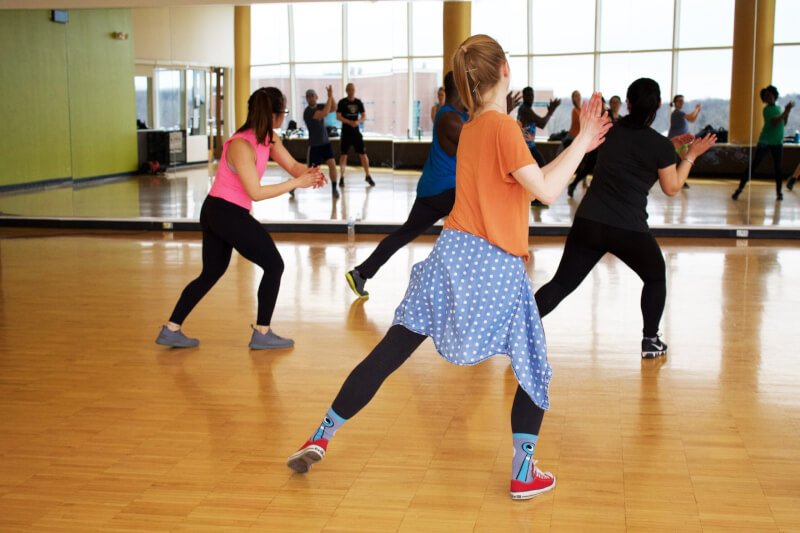In the pursuit of maintaining good health and overall well-being, it is essential to pay attention to our posture, especially as we age. As we get older, our bodies undergo various changes that can affect our posture and lead to discomfort or pain. Therefore, it becomes crucial to find effective exercises that can help improve posture in older adults. In this article, we will explore different exercises and techniques specifically tailored to address the needs of older adults, with the aim of achieving better posture and enhancing their quality of life.
Overview
Introduction to posture in older adults
As we age, it is important to pay attention to our posture. Posture refers to the positioning of our body while sitting, standing, and moving. It plays a vital role in our overall well-being, especially for older adults. Good posture not only enhances physical appearance but also contributes to improved balance, reduced pain, and increased mobility. In this article, we will explore various exercises and techniques that can help improve and maintain good posture in older adults.
Benefits of maintaining good posture
Maintaining good posture in older adults offers numerous benefits beyond just looking more confident and composed. It helps alleviate common musculoskeletal issues such as back and neck pain, reduces the risk of falls and injuries, improves breathing and digestion, and enhances overall body strength and stability. Additionally, good posture promotes proper alignment of the spine, which ensures optimal functioning of the nervous system. By consciously improving posture, older adults can enjoy a higher quality of life and maintain their independence as they age.
Common postural issues in older adults
As we age, certain postural issues tend to emerge more prominently. These include rounded shoulders, forward head posture, rounded upper back (hunchback), and excessive curvature of the lower back (swayback). These postural deviations can result from factors such as weakened muscles, reduced flexibility, and prolonged periods of sitting. It is important to identify and address these issues early on, as they can lead to discomfort, pain, and decreased mobility. By incorporating targeted exercises and techniques, older adults can work towards correcting and improving their posture.
Stretching exercises
Upper body stretches
To address common postural issues in the upper body, such as rounded shoulders and forward head posture, incorporating upper body stretches can be highly beneficial. These stretches help lengthen and relax the tight muscles while increasing flexibility and range of motion. Some effective upper body stretches for older adults include neck stretches, chest stretches, and shoulder rolls. By regularly practicing these stretches, older adults can alleviate tension in the upper body and promote better posture.
Lower body stretches
In addition to the upper body, it is important to focus on stretching the lower body muscles to improve posture in older adults. Tight hip flexors, hamstrings, and calf muscles can contribute to postural deviations such as swayback or a leaning forward posture. Including exercises such as hip flexor stretches, seated forward bends, and calf stretches can help lengthen these muscles, improve flexibility, and correct postural imbalances. By incorporating lower body stretches into their routine, older adults can experience improved posture and better overall body alignment.
Neck and shoulder stretches
The neck and shoulder area are common areas of tension and discomfort, especially for older adults. Regularly performing neck and shoulder stretches can help alleviate stiffness and improve posture in these areas. Exercises that focus on neck rotations, shoulder rolls, and shoulder stretches can help stretch and strengthen the muscles, reducing strain and promoting proper alignment. By incorporating these stretches into their daily routine, older adults can experience increased comfort, reduced pain, and improved posture.
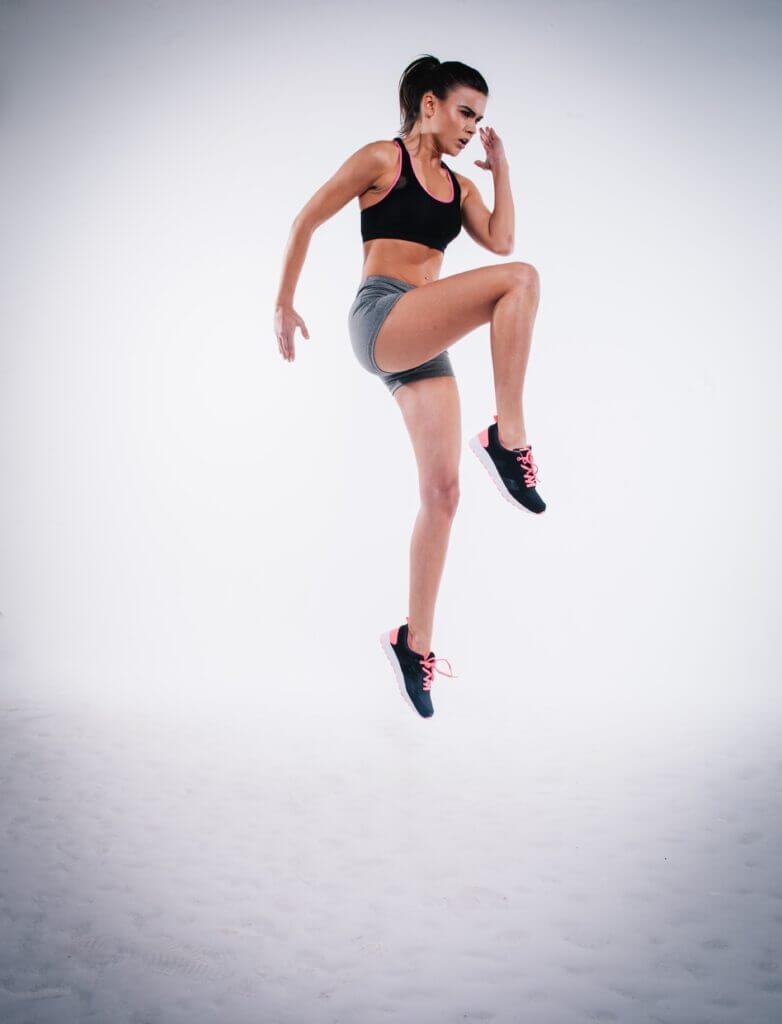
Strengthening exercises
Core strengthening exercises
A strong core is essential for maintaining good posture in older adults. The core muscles, including the abdominals, obliques, and lower back muscles, provide stability and support for the spine. Weak core muscles can lead to postural deviations such as swayback or poor alignment. By incorporating core strengthening exercises like plank variations, leg raises, and seated twists, older adults can strengthen their core muscles, improve stability, and enhance posture.
Back strengthening exercises
To counteract rounded upper back and hunchback postures, it is important to focus on strengthening the back muscles. Back strengthening exercises can help improve posture and alleviate back pain. Exercises such as supermans, rows, and reverse flies target the muscles in the upper back and help maintain proper alignment. By incorporating these exercises into their routine, older adults can build strength in the back muscles, promote better posture, and reduce discomfort.
Shoulder and chest strengthening exercises
Strengthening the muscles in the shoulders and chest can help improve posture and counteract rounded shoulders. Exercises such as shoulder press, chest press, and push-ups target these muscles, promoting better alignment and reducing the risk of postural deviations. By regularly practicing these exercises, older adults can strengthen their shoulder and chest muscles, improve posture, and enhance overall upper body strength.
Balance exercises
Standing leg lifts
Balance exercises are crucial for older adults as they help improve stability and reduce the risk of falls. Standing leg lifts are a simple yet effective exercise that helps strengthen the muscles in the legs and hips while promoting better balance. To perform this exercise, stand behind a chair or use a wall for support. Lift one leg straight out to the side, keeping the knee straight. Hold the position for a few seconds before returning to the starting position. Repeat on the other leg. By incorporating standing leg lifts into their routine, older adults can improve balance and maintain an upright posture.
Heel-to-toe walk
The heel-to-toe walk is a balance exercise that helps improve posture by focusing on the lower body and core muscles. To perform this exercise, imagine a straight line on the ground and walk along it, placing the heel of one foot directly in front of the toes of the other foot with each step. This exercise challenges balance and promotes proper alignment. By practicing the heel-to-toe walk regularly, older adults can enhance their balance, strengthen their lower body, and improve overall posture.
Single-leg balance
Single-leg balance exercises are excellent for improving stability and strengthening the muscles in the legs and core. Stand behind a chair or use a wall for support if needed. Lift one leg off the ground and balance for as long as possible, aiming for at least 30 seconds. Repeat on the other leg. By regularly practicing single-leg balance exercises, older adults can improve stability, develop stronger leg muscles, and enhance posture.

Yoga and Pilates
Yoga poses for improving posture
Yoga offers numerous poses that can help improve posture by strengthening and lengthening the muscles and promoting body awareness. Some beneficial yoga poses for older adults include mountain pose, cat-cow stretch, cobra pose, bridge pose, and tree pose. These poses target different muscle groups, including the core, back, and legs, promoting better alignment and improved posture. By incorporating yoga into their routine, older adults can enhance their overall body strength, flexibility, and posture.
Pilates exercises for better alignment
Pilates is another excellent form of exercise that focuses on core strength, flexibility, and alignment. Many Pilates exercises directly target the muscles involved in maintaining good posture. Exercises such as pelvic tilts, spine stretches, and shoulder bridge work to strengthen the core and back muscles, allowing for improved alignment. By incorporating Pilates into their routine, older adults can strengthen their postural muscles, enhance body awareness, and improve overall posture.
Posture correction techniques
Posture awareness exercises
Developing awareness of one’s posture is crucial for effectively correcting and maintaining good posture. Posture awareness exercises involve regularly checking in with oneself and paying attention to body positioning throughout the day. Simple exercises such as sitting up straight, rolling the shoulders back and down, and keeping the head aligned with the spine can help develop better posture habits. By incorporating posture awareness exercises into their daily routine, older adults can become more mindful of their posture and consciously work towards improving it.
Mirror exercises
Using a mirror is a helpful technique for correcting and maintaining good posture. By standing in front of a mirror, older adults can visually assess their posture and make any necessary adjustments. Exercises such as practicing proper standing alignment, keeping the ears aligned with the shoulders, and straightening the back while sitting can be performed while looking into the mirror. By regularly practicing mirror exercises, older adults can gain a better understanding of their posture and make changes as needed.
Wall exercises
Wall exercises provide a useful tool for improving posture, as they allow for alignment feedback and muscle engagement. Exercises such as wall angels, wall sits, and wall presses can be performed against a wall. These exercises help strengthen and stretch the muscles involved in good posture while providing feedback on alignment. By incorporating wall exercises into their routine, older adults can develop better posture habits and improve overall alignment.
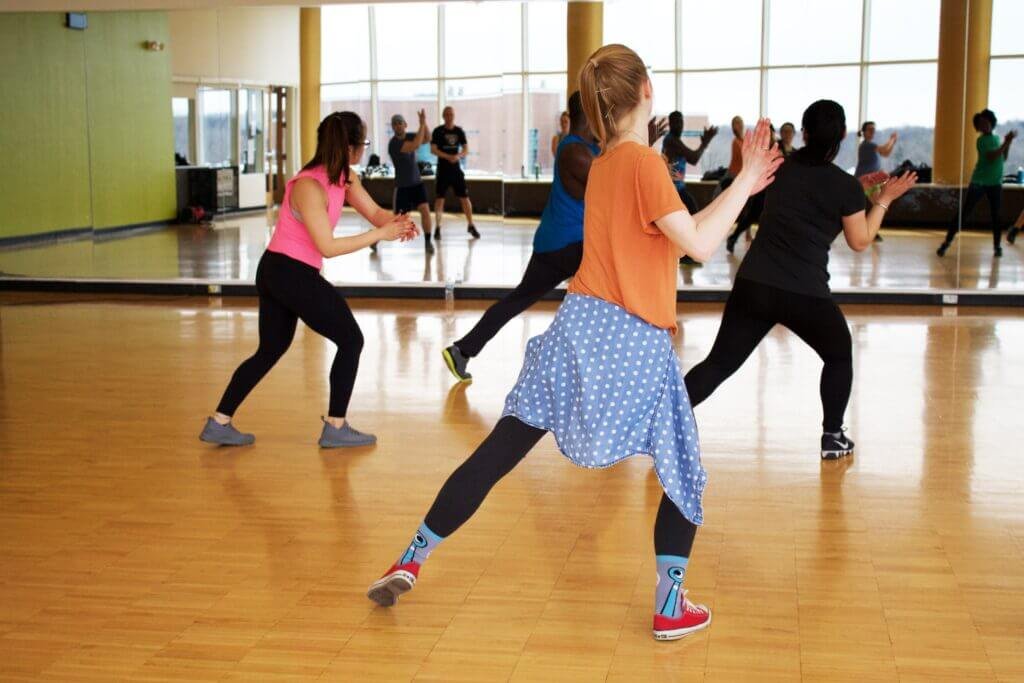
Equipment for posture improvement
Resistance bands
Resistance bands are a versatile and affordable tool that can be used to improve posture in older adults. These bands provide resistance, allowing for strengthening exercises that target the muscles involved in maintaining good posture. Exercises such as rows, chest pulls, and shoulder rotations can be performed using resistance bands. By incorporating resistance bands into their routine, older adults can enhance their strength, stability, and posture.
Pilates balls
Pilates balls, also known as stability balls, can be used to improve posture by promoting core strength and stability. These balls challenge the muscles through exercises such as seated marches, ball squats, and back extensions. By incorporating Pilates balls into their routine, older adults can strengthen their core muscles, improve balance, and enhance posture.
Posture corrector braces
Posture corrector braces are specifically designed to support and align the spine, promoting better posture. These braces can be worn throughout the day and provide gentle reminders and support for maintaining proper alignment. It is important to consult with a healthcare professional or physical therapist before using posture corrector braces to ensure the correct fit and usage. By incorporating posture corrector braces, older adults can receive added support in maintaining good posture.
Lifestyle changes
Ergonomic adjustments
Making ergonomic adjustments in daily activities and environments is important for maintaining good posture. Older adults should consider optimizing their seating arrangements by using chairs with proper back support and positioning their computer screens at eye level. Additionally, adjusting the height and position of workstations, using supportive pillows while sleeping, and using proper lifting techniques can all contribute to improved posture. By making these ergonomic adjustments, older adults can reduce strain on their muscles and joints, ultimately maintaining better posture.
Healthy sleeping habits
Maintaining good posture extends beyond waking hours and into sleep. Older adults should pay attention to their sleeping habits to promote optimal spinal alignment during sleep. The choice of mattress and pillow plays a significant role in supporting the spine and preventing postural deviations. Firm but comfortable mattresses that provide adequate support for the natural curves of the spine are recommended. Additionally, using a pillow that properly supports the head and neck alignment can help maintain good posture while sleeping.
Taking breaks from sitting
Prolonged periods of sitting can contribute to poor posture and musculoskeletal issues. Older adults should make a conscious effort to take breaks from sitting for extended periods. Frequent breaks can help alleviate muscle stiffness and promote better circulation. Incorporating light stretching exercises or short walks during breaks can further enhance the benefits. By taking regular breaks from sitting, older adults can reduce the negative effects of prolonged sitting on their posture and overall health.
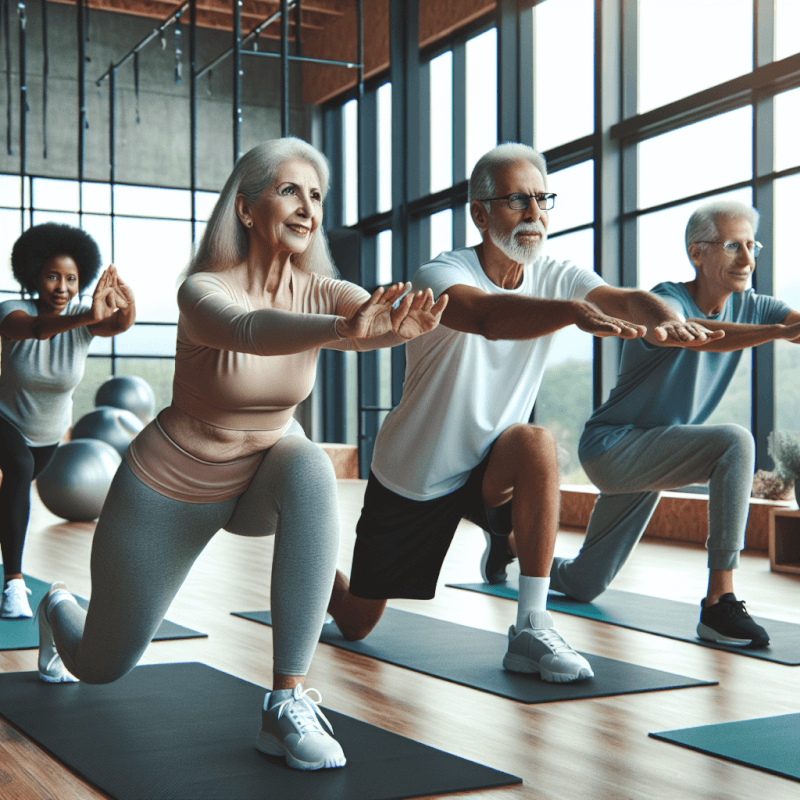
Professional guidance
Consulting a physical therapist
For older adults experiencing significant postural issues or chronic pain, consulting a physical therapist can provide valuable guidance and customized exercise programs. A physical therapist can assess individual needs, identify specific postural imbalances, and develop a targeted plan for improving posture. By working closely with a physical therapist, older adults can receive professional guidance and support for addressing their unique postural concerns.
Working with a personal trainer
Working with a personal trainer who specializes in posture improvement can be beneficial for older adults. A personal trainer can develop a personalized exercise program that targets specific postural issues and ensures safe and effective workouts. They can provide instruction, guidance, and motivation, helping older adults stay consistent in their posture improvement journey. By working with a personal trainer, older adults can receive tailored support and guidance to improve their posture.
Joining posture-focused classes
Posture-focused classes, such as yoga, Pilates, or specialized posture improvement programs, can offer a supportive and engaging environment for older adults to improve their posture. These classes provide expert instruction, structured workouts, and a community of individuals with similar goals. By joining these classes, older adults can receive guidance from qualified instructors, gain knowledge about proper alignment, and enjoy the camaraderie of like-minded individuals.
Consistency and progression
Importance of regular practice
Improving and maintaining good posture requires consistency and regular practice. Older adults should aim to incorporate the recommended exercises and techniques into their daily routine. Consistent practice allows the body to adapt and strengthens the postural muscles over time. By committing to regular practice, older adults can gradually correct their postural issues and maintain good posture in the long run.
Gradually increasing difficulty
As older adults progress in their posture improvement journey, it is important to gradually increase the difficulty of exercises and challenges. This gradual progression ensures that the body continues to adapt and strengthen, promoting continuous improvement. For example, increasing the duration of standing leg lifts or the number of repetitions for core exercises can challenge the muscles and stimulate further improvements in posture. By gradually increasing the difficulty, older adults can continue to see progress and maintain optimal posture.
Tracking progress
Tracking progress is a motivating and informative tool for older adults working on improving posture. Keeping a journal or using a mobile app to record exercises, repetitions, and any noticeable changes in posture can help individuals stay accountable and monitor their progress. This tracking allows older adults to identify areas of improvement and celebrate milestones along their posture improvement journey. By tracking progress, older adults can stay motivated and encouraged as they work towards better posture.
In conclusion, maintaining good posture is essential for older adults to improve their overall well-being and quality of life. Through a combination of stretching exercises, strengthening exercises, balance exercises, yoga and Pilates, posture correction techniques, equipment, lifestyle changes, professional guidance, consistency, and progression, older adults can address postural issues, reduce pain, enhance stability, and promote optimal alignment of the spine. By incorporating these exercises and techniques into their routine and committing to regular practice, older adults can achieve and maintain good posture as they age.
